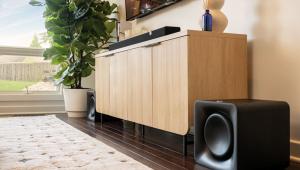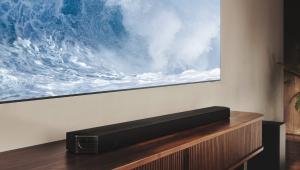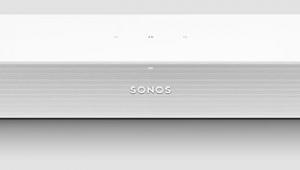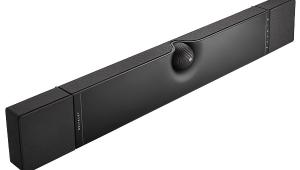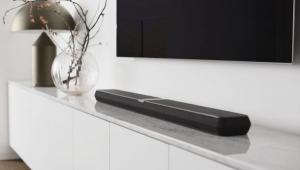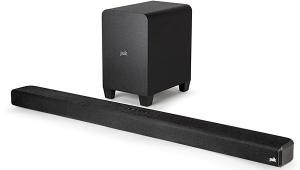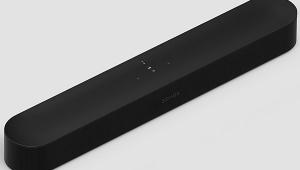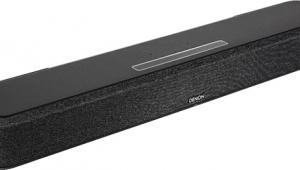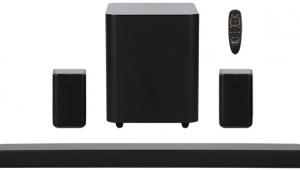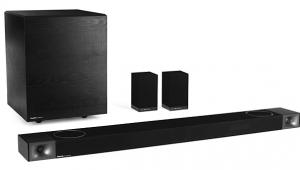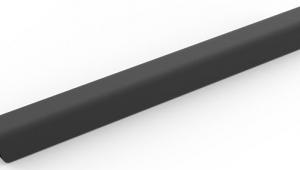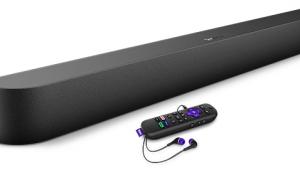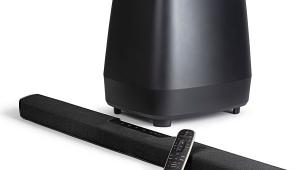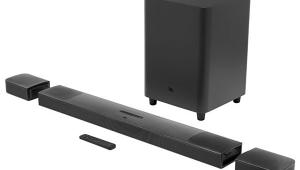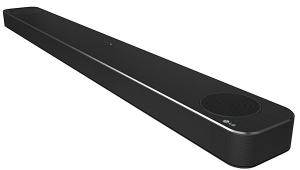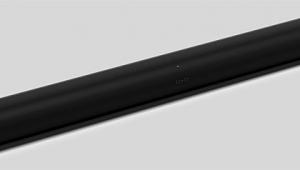Review: PSB Imagine W3 soundbar and W1 on-wall speaker Page 2
Performance
Before I got into serious analysis of what the W3 can do, I thought I’d have some fun with it. So I pulled out the Blu-ray Discs of The 25th Anniversary Rock & Roll Hall of Fame Concerts and played some of the many and varied selections.
When I listened to Stevie Wonder’s performance of “Superstition,” with Jeff Beck on guitar, there was no doubt I was hearing something comparable to only a handful of other soundbars on the market. As I’ve experienced with PSB’s conventional speakers, no sonic flaw ever called attention to itself. From the standpoints of tonal fidelity and dynamic capability, at least, there was nothing to remind me I was listening to a soundbar. I cranked up the tune and reveled in Wonder’s hard groove and Beck’s raw dynamics.
What was the difference between this and a standard 5.1 speaker system? With the W3’s left and right tweeters only 32 inches apart, the sound wasn’t as big and enveloping as it would have been with the left and right speakers spread, say, 8 feet apart.
On the same Blu-ray, Simon and Garfunkel’s “The Sound of Silence” revealed the only sonic anomaly I could find in the W3: what sounded like a subtle emphasis at 3 or 4 kHz. It didn’t affect Simon’s acoustic guitar, but it made the duo’s vocals sound just a tad sibilant.
When I evaluate a soundbar — which, again, often means a device in the $250 range with a plastic enclosure and cheap drivers — I always start with two test scenes that quickly reveal flaws in inexpensive audio gear. The first is Chapter 4 of Star Wars, Episode II: Attack of the Clones. It’s just dialogue and light background music, but the dialogue is spoken by six actors with different-sounding voices, so it’s a great test of voice reproduction.
The W3 sailed through this test. All the voices had a natural timbre, with no artificial-sounding coloration or audible distortion. After hearing so many plastic soundbars mangle this scene even more viciously than critics mangled the movie, I was impressed to hear the W3 totally nail it.
The second test is “Shower the People,” from the James Taylor DVD Live at the Beacon Theatre. As in the Simon and Garfunkel tune, I heard just a trace of sibilance in Taylor’s voice; otherwise, everything from the bass to the ultra-high-pitched glockenspiel sounded pretty close to perfect. Again, the surround effect wasn’t as seamless as it would be with five separate speakers or some of the less-purist soundbars on the market.
I got the same result with stereo music. David Chesky’s String Theory, a very ambient-sounding audiophile recording, displayed a nearly ideal tonal balance with a deep but narrow soundstage.
One obvious competitor to the W3 is the GoldenEar Technology SuperCinema 3D Array, a $999 passive LCR-type soundbar. Thanks to the 3D Array’s crosstalk cancellation, it sounds more enveloping than the W3, especially with stereo music. But the 3D Array’s response rolls off below about 200 Hz, which makes it somewhat less dynamic-sounding than the W3 and harder to mate with a subwoofer without getting a sonic “hole” in the octave between 100 and 200 Hz.
Bottom Line
The W3 does exactly what Paul Barton said it would, which is something audiophiles probably thought impossible: It delivers a true high-fidelity experience in a soundbar form factor. Whether you prefer the sonic purity and great dynamics of the W3, or the more enveloping effect delivered by some of the other soundbars on the market, is totally up to you.
- Log in or register to post comments
